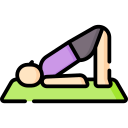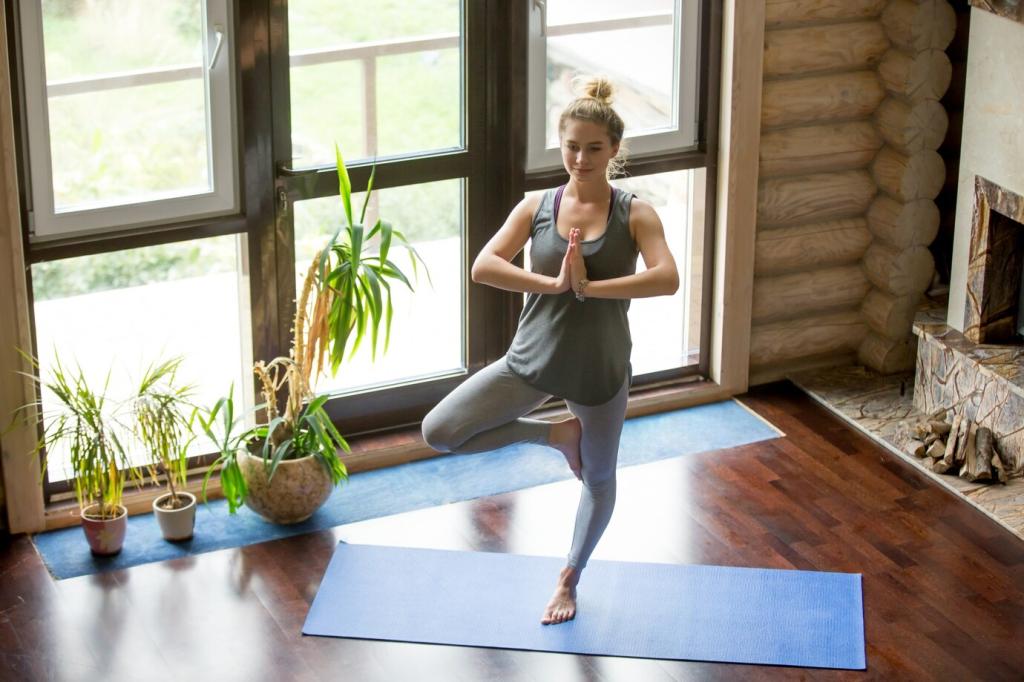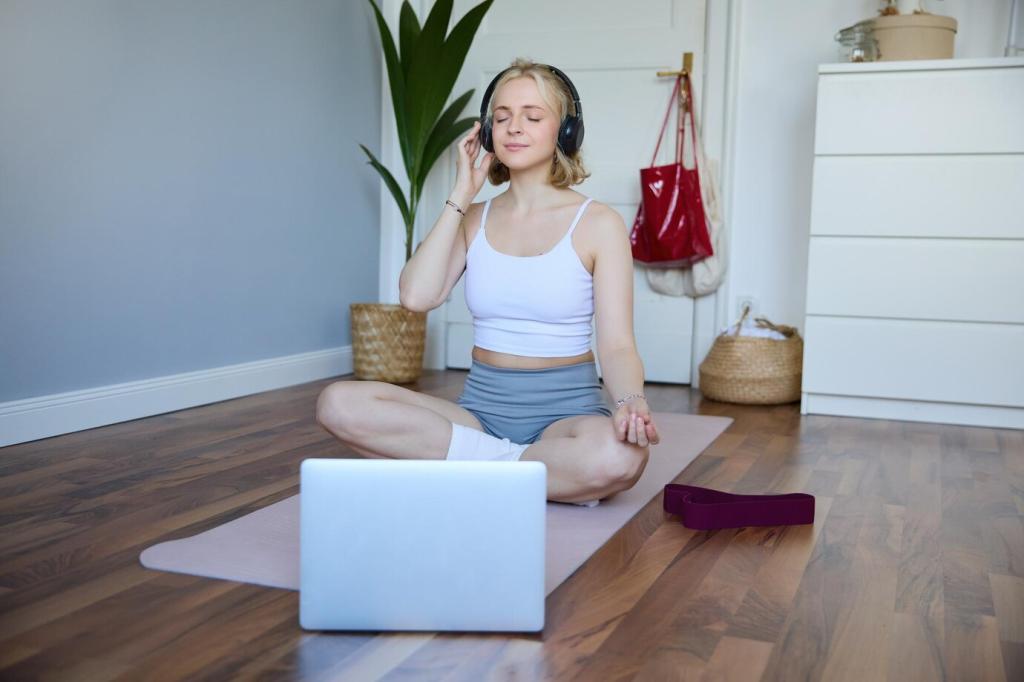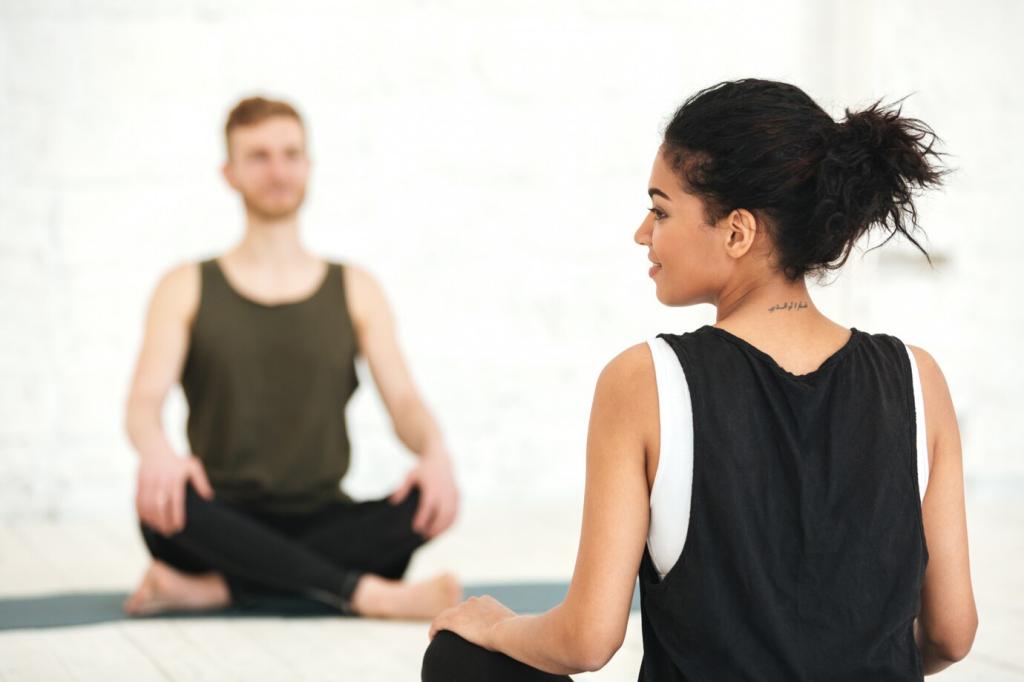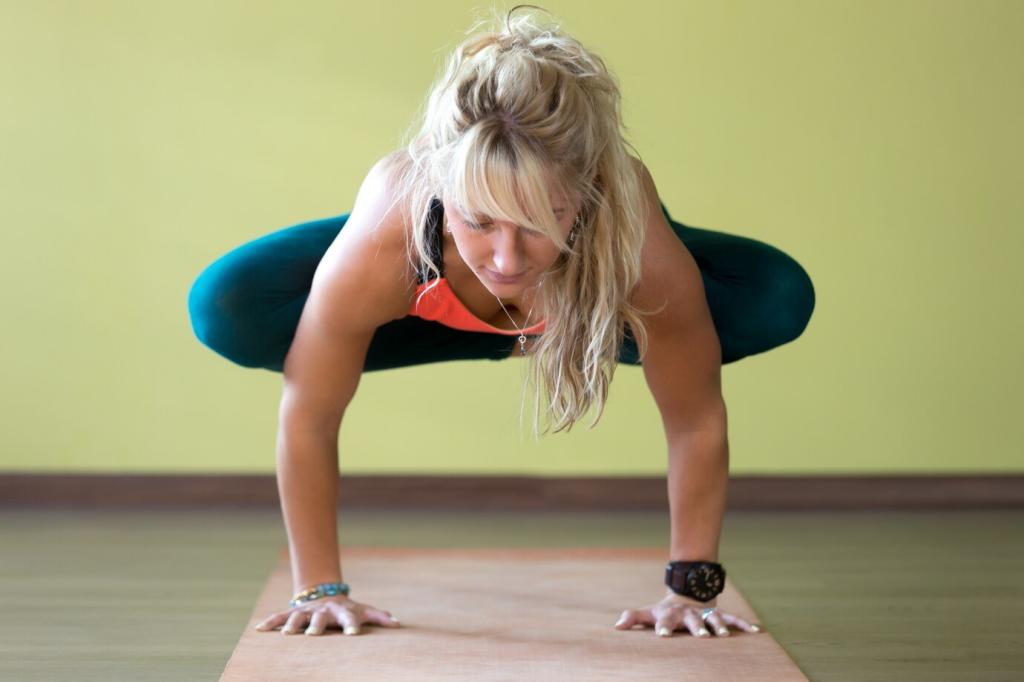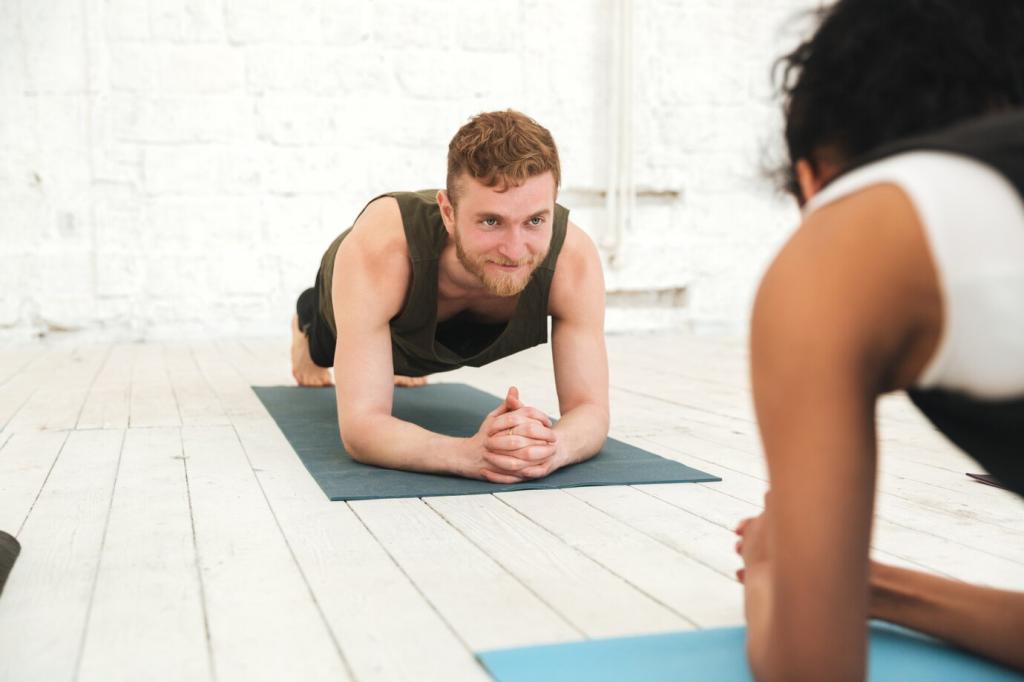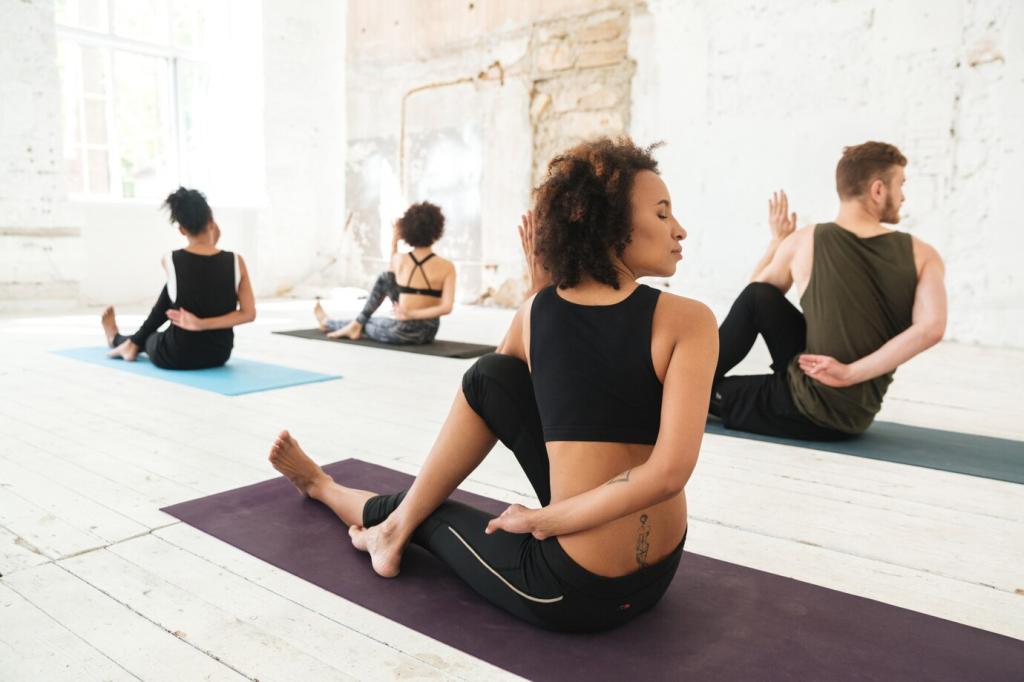Breath, Tempo, and Transitions
Begin with nasal breathing, about five to six breaths per minute during stillness, slightly faster during movement. This pace supports focus, maintains calm, and can improve heart-rate variability, helping beginners sense when to ease off or lean in.
Breath, Tempo, and Transitions
Use a conversational pace with clear counts: inhale three, exhale four in static poses; shorter counts in transitions. Slower tempo gives time to notice sensations, align joints, and modify, reducing frustration and building confident body awareness.
Breath, Tempo, and Transitions
Plan exits before entries. From Warrior I, lower back knee to transition into Low Lunge, then step to Forward Fold. Fewer leaps, more steps. Smooth transitions minimize wobble, conserve energy, and help beginners feel skillful from the start.
